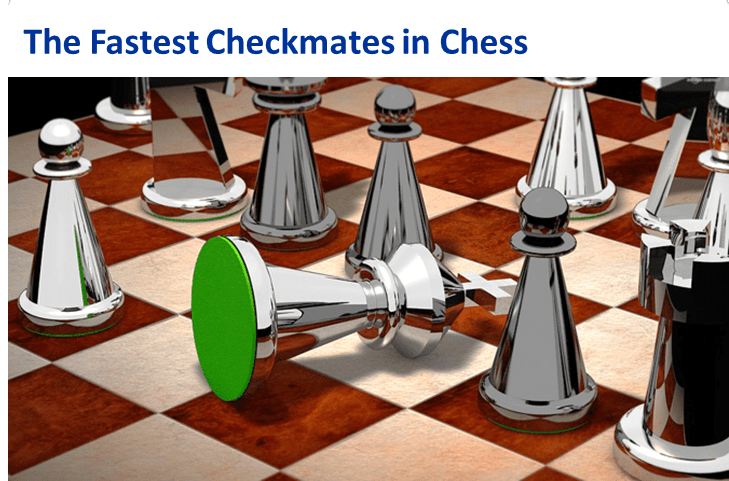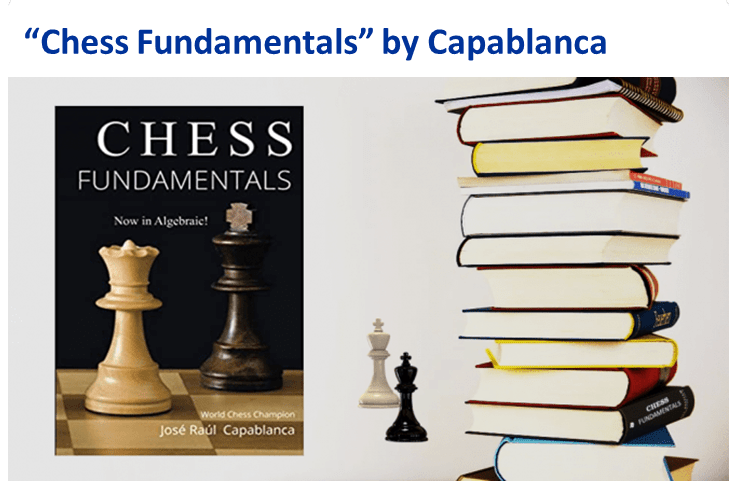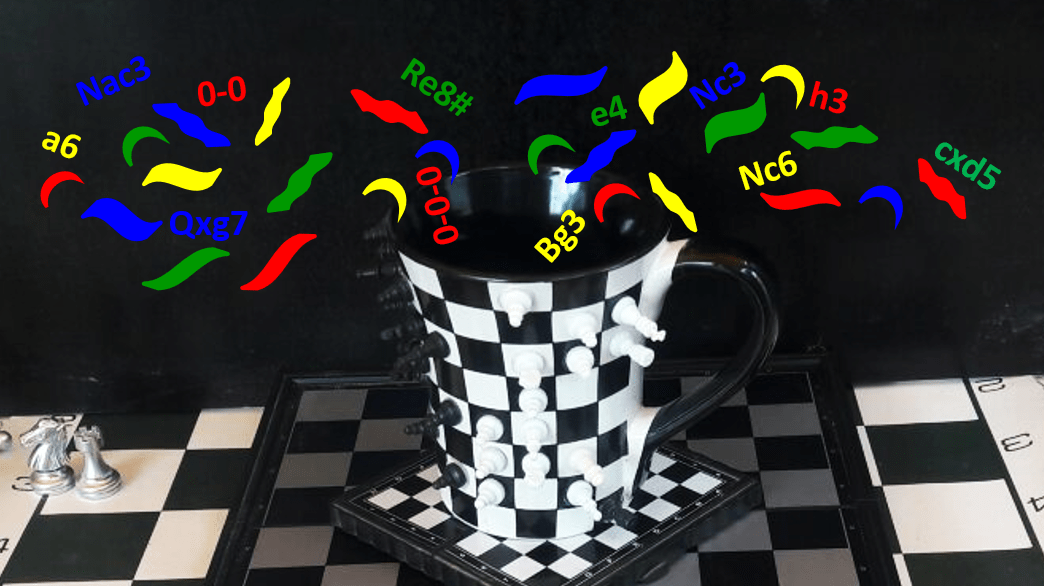
Algebraic Notation in Chess
One of the elementary steps that must be taken to study and progress in chess is to learn to read and score games. From this we will be able to understand the chess books, study games or write down ours and then review them. For this we will use algebraic notation, which at first may seem complicated, but it is very easy to learn.
Algebraic notation is the most widely used method to represent chess moves and is the only one endorsed by FIDE since 1981 (some variants such as FRC only support this notation). There are other methods such as descriptive notation, but less and less is used.
The Board.
We will start with the board, each of its squares is identified by a single combination (a letter + a number) as shown below. The first belongs to the column (it is represented by one of the following lowercase letters: a - b - c - d - e - f - g - h), are called files. The second character indicates the rows (represented by a number from 1 to 8), are called ranks. To increase your ability to locate the square when writing or reading I recommend the tool "Vision" of Chess.com.
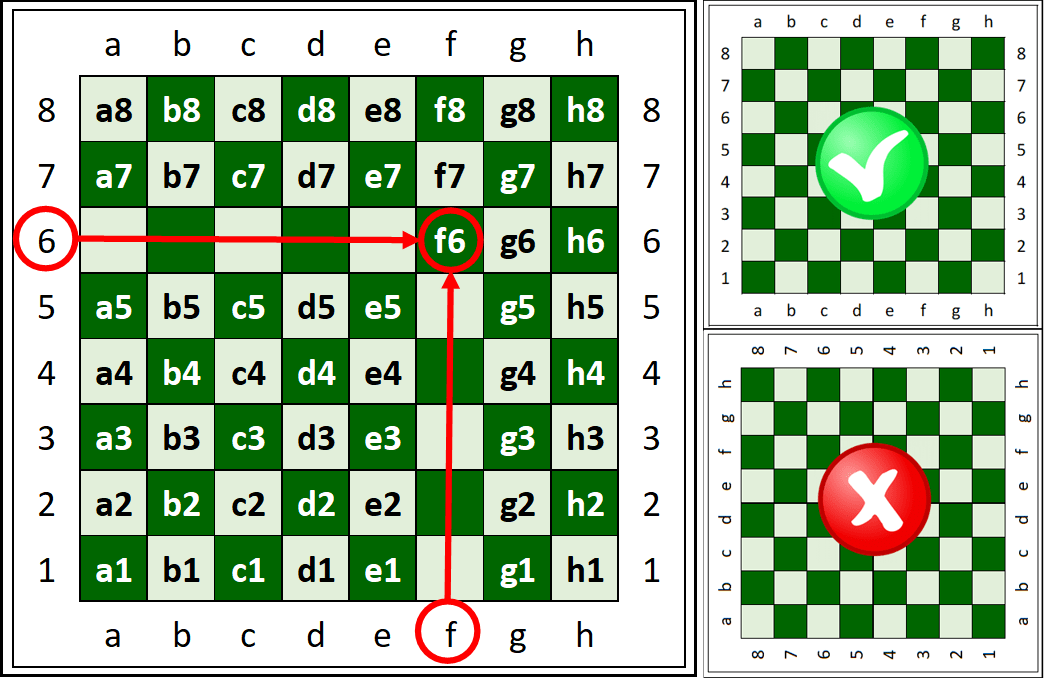
In the starting position the white pieces must always be located on the side of row 1 and the player who plays them will have on his left the column a, this is critical for the understanding of the notation and the recreation of the game.
The Pieces.
Let us now move on to the pieces, each one is identified by a capital letter, the pawn does not require assigned letter as we will see when putting the notation into practice. According to the language, the capital letter associated with the pieces vary as we can see in the following table where they are shown in English and Spanish.

In some international media (books, magazines, software and/or Internet webs), it is common for pieces to be represented by drawings, in other cases English is often used as almost international.
Writing a Move.
Knowing this let’s move to the notation of the movement, for this we will start with the capital letter of the piece we are going to move, followed by the coordinate that identify the target square, except for pawns for which only the square where it will be placed is noted. When the move involves a piece capture, a letter "x" is placed between the identification of the piece and that of the square (it is not necessary to identify which piece will be captured), if the capture was made by pawn is included before the "x" the letter of the column where the pawn is located.
Special Moves.
As special moves the kingside castling is indicated with 0-0, and the queenside castling by 0-0-0. The pawn promotions are indicated with the regular pawn movement and the letter of the promoted piece is added (Example: a pawn located on h7 advances to row 8 and is promoted in Queen, just write h8D, it is not necessary to add the sign "=" although it will be common to see it this way). Captures “En Passant” do not require a special annotation, the destination square that will be annotated is where the pawn that captures will be (some authors add "ep").

Avoid Ambiguity.
In case of ambiguities, where more than one piece of the same type can be moved to the same coordinate, the following rules apply:
- First, if the file of departure differs, we use the file letter to identify.
- Second, if the rank of departure differs and de files are the same, we use the rank letter to identify.
When either case could be used, always give priority to the first. If two identical pieces can reach the same target square, but only one of them can make legal moves then it is not necessary to specify.
Other Chess Annotation Symbols
When a move puts the King in check, the sign "+" will be placed adjacent to the movement noted, so for checkmate we use "++" or "#".
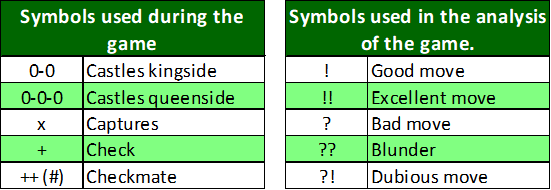
Example:
As an example we can see this Caro-Kann opening trap:
Chess Notation Scoresheet.
To record your games, you can make your own scoresheet, buy a notebook or even write down on any sheet, the important is the content. Below I leave you a sample, feel free to download it to be used.
 In general, this information should be enough to start writing down your games, which can then be uploaded to the Chess.com Analysis Board.
In general, this information should be enough to start writing down your games, which can then be uploaded to the Chess.com Analysis Board.
More about my blog:
